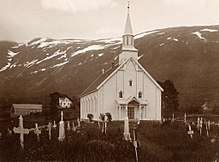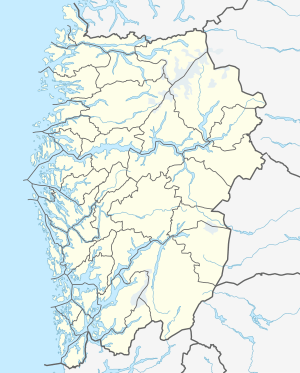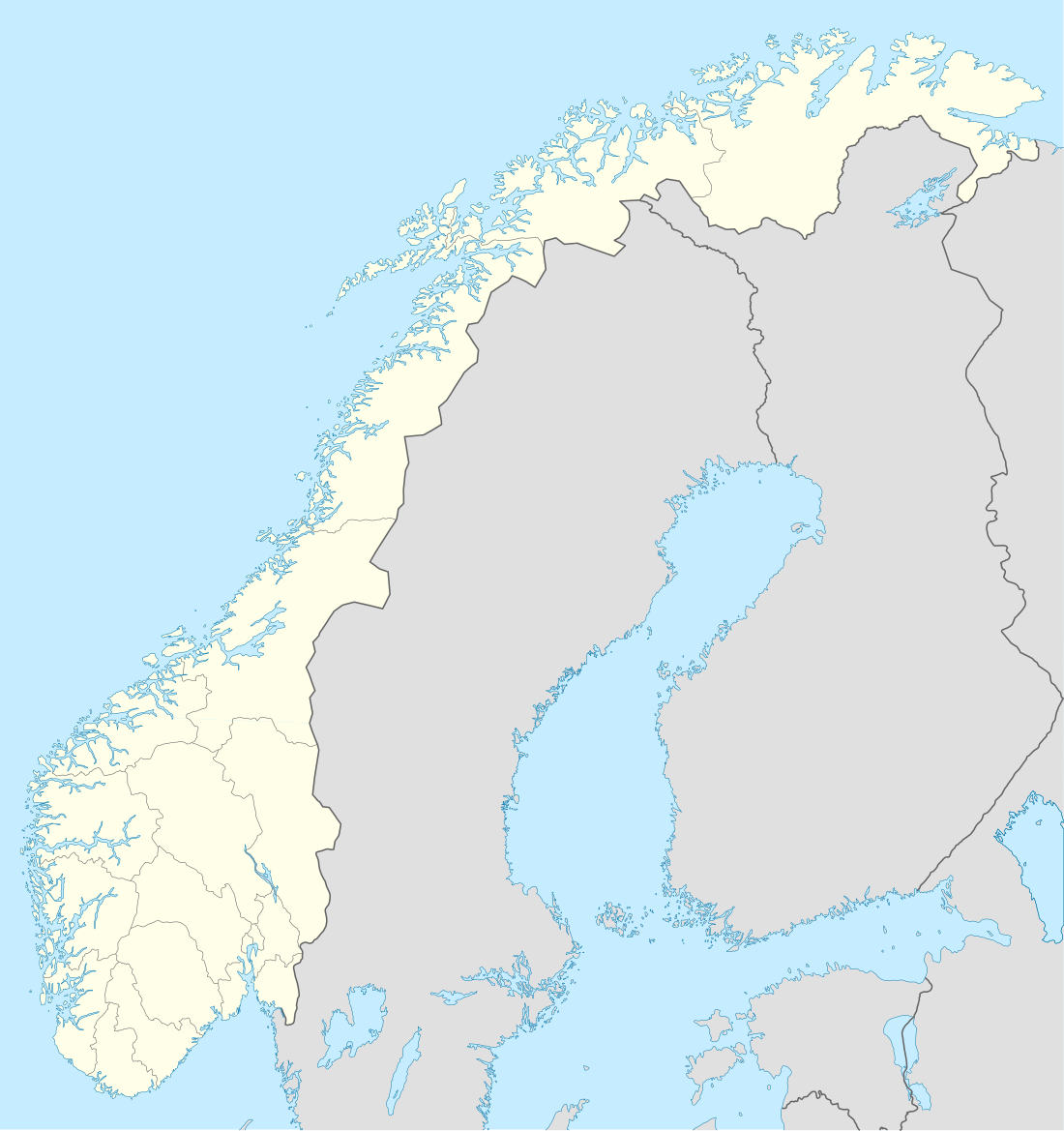Davik Church
Davik Church (Norwegian: Davik kyrkje) is a parish church of the Church of Norway in Bremanger Municipality in Vestland county, Norway. It is located in the village of Davik. It is the church for the Davik parish which is part of the Nordfjord prosti (deanery) in the Diocese of Bjørgvin. The white, wooden church was built in a long church style in 1886 by the architect Georg Andreas Bull. The church seats about 500 people.[1][2]
| Davik Church | |
|---|---|
| Davik kyrkje | |
 View of the church | |
 Davik Church Location of the church  Davik Church Davik Church (Norway) | |
| 61.8921°N 5.5323°E | |
| Location | Bremanger Municipality, Vestland |
| Country | Norway |
| Denomination | Church of Norway |
| Churchmanship | Evangelical Lutheran |
| Website | https://kyrkja.no/bremanger |
| History | |
| Status | Parish church |
| Founded | 14th century |
| Consecrated | 6 July 1886 |
| Architecture | |
| Functional status | Active |
| Architect(s) | Georg Andreas Bull |
| Architectural type | Long church |
| Completed | 1886 |
| Specifications | |
| Capacity | 500 |
| Materials | Wood |
| Administration | |
| Parish | Davik |
| Deanery | Nordfjord prosti |
| Diocese | Bjørgvin |
It was consecrated on 6 July 1886 by the Bishop Fredrik Waldemar Hvoslef. The church was built near the site of a previous cruciform church which had become too small for the congregation. There was some controversy as to where the new (present) church was to be built. Many wanted the church to be built on the other side of the Nordfjorden, but the people on the south side protested, and it was finally decided to build the new church near the old church.[3]
Building
The church itself is not particularly long, but it is unusually wide. Before the pipe organ was installed in the gallery in 1933, the church could seat 700 people. Davik Church is thus one of the biggest in the county. The chancel and the nave are partitioned only by a low balustrade, and have the same width as the porch. The square chancel has permanent benches along the side walls. The pew seats are painted blue, and otherwise oak-coloured with individual numbers for the various farms and families. The slanted ceiling in the nave and chancel are painted white, but towards the side walls of the nave, the ceiling is lowered and flat. The church room has columns supporting the gallery as well as functioning as roof supports to the sides. Along the walls there are five pointed-arch windows on either side, with green and red top sections. The altar rail is oval with a white-painted balustrade, similar to the low chancel partition. The usual vestries are located behind the chancel. On the western wall is the spacious porch with stairways on either side leading up to the gallery. In the corners of the porch there are small rooms with toilet facilities.[3]
The steeple is placed on the roof ridge itself. The turret base is square, the steeple is octagonal and the spire is covered with copper. The impression of an unusually big and fine church is strengthened precisely because of its wide west wall and the pure, elegant lines in the architecture.[3]
History
The earliest existing historical records of the church date back to 1330, but the church was already existing at that time. The original medieval stave church was likely torn down in 1655. Not much is known about that church. In 1655, a new church was built on the same location. It was a small long church. That church was only in use for 95 years before it was torn down in 1750 and replaced by a timber-framed cruciform church. In 1886, the older church was torn down and a new church was built just to the south of the old church. The new church from 1886 was built because the previous church was too small. This new church was extraordinarily wide for a long church, originally seating about 700 people.[4]
See also
References
- "Davik kyrkje". Kirkesøk: Kirkebyggdatabasen. Retrieved 2019-10-17.
- "Oversikt over Nåværende Kirker" (in Norwegian). KirkeKonsulenten.no. Retrieved 2019-10-17.
- "Davik Kyrkje" (in Norwegian). Sogn og Fjordane Fylkesarkiv. Archived from the original on 2016-03-04. Retrieved 2013-11-01.
- "Davik kyrkjestad" (in Norwegian). Norwegian Directorate for Cultural Heritage. Retrieved 2019-10-17.

